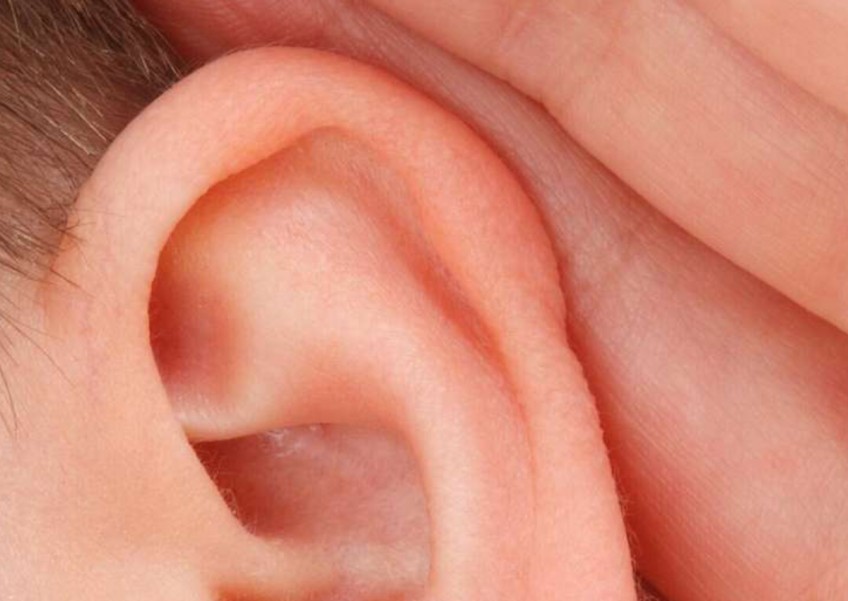Everything you need to know about ear infections in children

As a parent, it's important to recognise the signs of an ear infection early on to seek prompt medical attention for your child. Here are 10 ear infection warning signs to watch out for in your kids.
Remember mums, if your child has a high fever that goes on for over five days, there's definitely more to it. A fever is often a sign that something out of the ordinary is going on and your body is trying to fight it off.

Firstly, what are ear infections all about? Ear infections in children usually occur in the middle ear, and are caused by bacteria occurring from the fluid that builds up behind the eardrum. In medical terms, ear infections are referred to as Otitis Media (OM).
There are three types of ear infections in children.
Middle ear infection, also known as otitis media, is a common condition that affects many children. This type of infection occurs when fluid builds up in the space behind the eardrum and becomes infected by bacteria or viruses. Symptoms of a middle ear infection in children may include ear pain, fever, trouble hearing, irritability, and loss of appetite.
This is sometimes an aftereffect of a regular ear infection. It happens when fluid continues to be trapped behind the eardrum after an ear infection. This is tricky because it doesn't typically cause symptoms and can only be diagnosed by a doctor inspecting your child's ear using a specific instrument.
This happens when fluid remains in the middle ear for an extended period or returns again and again even without an infection. This condition makes it difficult for children to fight new infections and can damage their hearing.
As always, bacteria and viruses are the culprits. Often after your child has a sore throat, cold, or any other upper respiratory infection, the bacteria may spread to the middle ear.
Also, fluid that enters the area usually drains quickly through the eustachian tubes which connect the middle ear to the back of the nose and throat. But when colds, sinus infections and allergies occur, these tubes get blocked and fluid ends up trapped in the middle ear.
Wet, warm places are breeding grounds for germs so a fluid-filled middle ear naturally paves the way for an infection to occur.
Ear infection in children is also more common than in adults because their eustachian tubes are smaller and more level than in adults. This makes it harder for fluid to drain out of the ear (even in normal conditions).
On another note, a child's immune system is not as developed and effective as an adult's and this makes it harder for him to fight infection.
By being aware of these common causes, parents can take steps to prevent ear infections in their children and seek medical attention promptly if they do occur.
There are primary and secondary risk factors for ear infections in children.
Primary risk factors
Secondary risk factors
Parents, watch out for the following signs that your child may have an ear infection:
An otoscope will be used by your healthcare practitioner to examine your child's ear. The hue of a healthy eardrum is pinkish-grey and transparent (clear). The eardrum may be inflamed, enlarged or red if an infection is present.
A pneumatic otoscope which blows a small amount of air at the eardrum can also be used to look for fluid in the middle ear. The eardrum should shift back and forth as a result of this. If there is fluid inside the ear, the eardrum will not move as freely.
Tympanometry is another test that uses air pressure to look for fluid in the middle ear. This is not a hearing test. If your child had a long-term or recurrent ear infection, or fluid in the middle ear that is not draining, your child's doctor may arrange a hearing test by an audiologist to detect probable hearing loss.
Your healthcare practitioner will also use a stethoscope to listen to your child's breathing and inspect her throat and nasal tract for symptoms of upper respiratory infection.
If it's just a case of an outer ear infection, or there is no infection, doctors may treat it with ear drops. However, for middle ear infections, it's likely he will prescribe your child a dose of antibiotics that will last for seven to 10 days.
This is usually given with other medication such as Ibuprofen to treat your child's fever. While other medications do not have to be completed, it's extremely important that you complete the course of antibiotics.
In the case of frequently recurring ear infections in children, doctors might recommend a surgical procedure that places a small ventilation tube in the eardrum to improve airflow and prevent the building up of fluid. A common surgical procedure for ear infections is a myringotomy, which involves making a small incision in the eardrum to drain fluid from the middle ear.
Don't be alarmed if the doctor performs a hearing test on your child. The fluid in the ear can cause temporary mild loss of hearing that should get better once the infection resolves.

Take note of these reminders in caring for your child's ear.
ALSO READ: Middle ear infections: Causes and treatments
Yes, they can become a serious problem. If left untreated or if the infection is severe, it can rupture your child's eardrum.
Repeated ear infections in children can lead to hearing loss and scarring. In very rare cases, untreated ear infections can lead to mastoiditis (a skull infection) or meningitis.
So mums, remember, if your child has a persistent fever, try to get to the root of the problem. If you find yourself pumping him with dose after dose of paracetamol only to have the fever returning with a vengeance, it's best that you get medical attention.
This article was first published in theAsianparent.